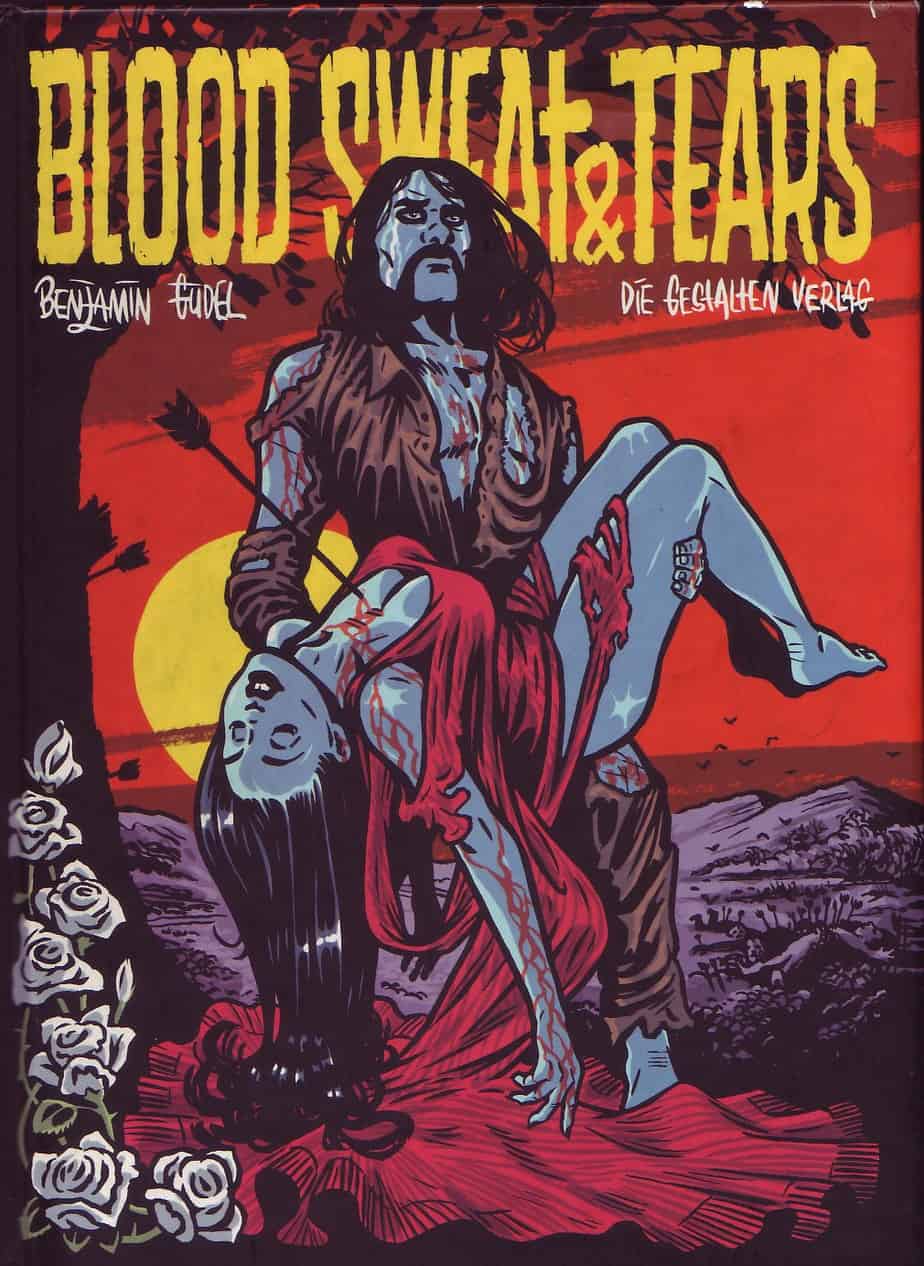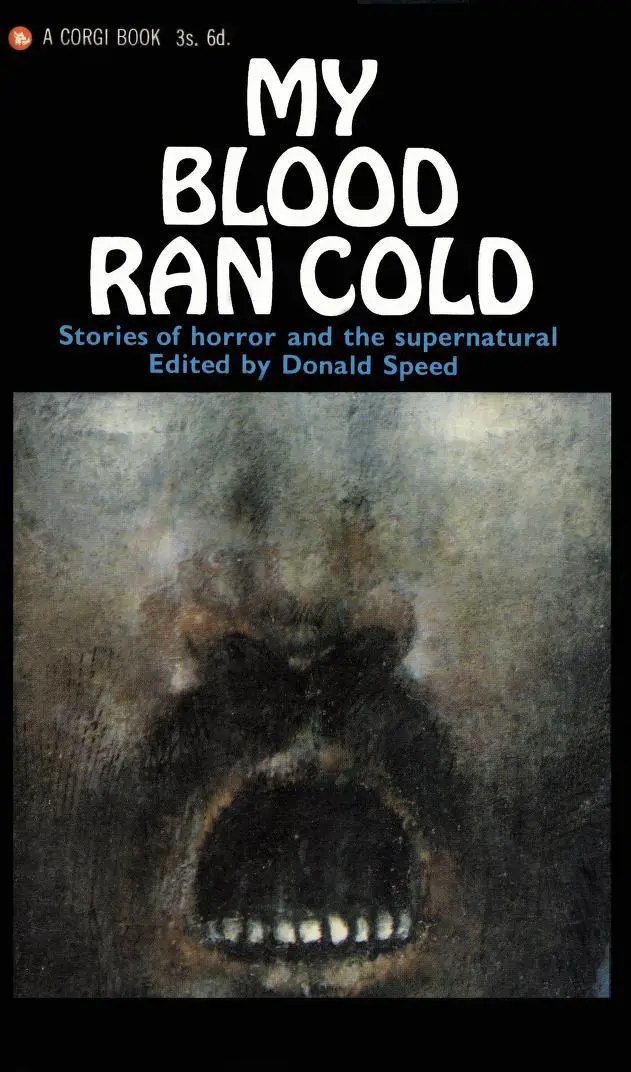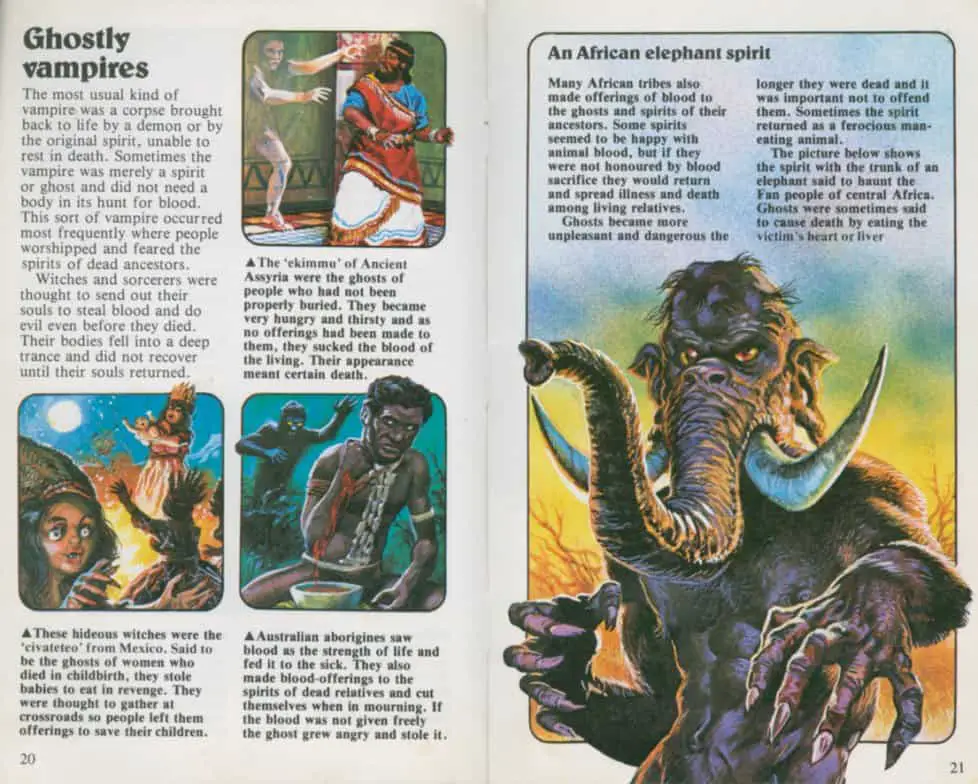Red is not only the colour of blood–and the import of this fact does not need any emphasis–but it has also been used from prehistoric times to the present as a shield against evil.
The Escape Through The Window: A Figura For Christ’s Victory Over Death, 1973
BLOOD AS SYMBOL OF LIFE
Ancient Greek philosopher Diogenes of Apollonia (born 460 BCE) thought of life as pneuma coursing through vessels. In Stoic thought, pneuma is the vital spirit, soul, or creative force of a person.
Many fourth-, fifth- and sixth-century thinkers are called “Pythagoreans” in the Greek tradition after the fourth century BCE. These Pythagoreans (Parmenides, Plato, Aristotle et al) thought the soul was nourished by blood.

Empedocles (400s BCE) was a Greek pre-Socratic philosopher. He is best known for originating the cosmogonic theory of the four classical elements. He had some wacky ideas about blood and its purpose. He thought blood was the seat of perception. Warm blood was involved in nourishing the body, digesting food, and even let the body respire and think. Technically, he wasn’t wrong? The key wacky thing being, Empedocles thought blood was the physical basis by which all of these things happened, and also the physical basis of consciousness. He believed blood contained the four material elements: fire, air, earth, water. These elements governed the entire universe, so blood was the most important aspect of humanity and life and existence and nature. Basically, Empedocles thought blood was really, really important. Blood connected humans to the world around them.
We know that during the High Middle Ages (1000 to 1250 AD) people thought of the body more like a mould, into which blood was poured, bringing the ‘mould’ to life. As evidence we have devotional writing. (Caroline Walker Bynum writes about this in Wonderful Blood, 2007). In one 14th century story from Germany, angels escort a widow to a wine press, squeeze out all of her blood and replace it with virginal blood. Now she’s a virgin again. (This presumably improves her remarriage prospects and therefore her socioeconomic status.) Obviously, this story didn’t really happen (at least, I hope not) but the fact that this story exists offers insight into how people of that time thought of blood and the body. To exchange blood is literally to become a different person.
Blood as a symbol of life can be seen in classical, Biblical and Medieval thought.
In the Hebrew Bible, the tribes of Israel are not allowed to eat blood.
For the life of a creature is in the blood, and I have given it to you to make atonement for yourselves on the alter; it is the blood that makes atonement for one’s life.
Leviticus 17:11
In Medieval Christianity, blood spritually nourished Christians in the same way that mothers nourish babies with milk. Although blood and milk may seem to be very different substances, they are not. Their colours are nothing alike, and are symbolically quite often opposite. In fact, breastmilk has many shared properties with blood. Colostrum, the earliest form of breast milk contains 1 to 5 million white blood cells per milliliter. (Breast milk is constantly changing to adapt to babies’ growth.) So when Medieval Christians started the tradition of forming community around the drinking of God’s (symbolic) blood in the performance of the Eucharist (aka Holy Communion, Lord’s Supper), perhaps this spoke to a deeper biological knowledge.
Christ is both priest and sacrifice. His body and blood are truly contained in the sacramane of the alter under the forms of bread and wine having been changed in substance, by God’s power, into his body and blood, so that in order to achieve this mystery of unity we receive from God what he received from us.
The Fourth Lateran Council (1215)
Why is Christ’s blood so important? It is thought that his blood is able to give life, even without his body. This is an affirmation of his divine status.
BLOOD AS COMMUNITY
But blood isn’t just about the creation of individual human life. Blood symbolises the creation of human community. As evidence of that we have a history of communion sacrifices. People come together and sacrifice life, with the shedding of blood. We know that communion sacrifice goes back at least as far as ancient Hellenic, Israelite and Nuer cultures.

We see it in Arabic oath rituals and as symbolic communion with God in Christianity since the late Medieval era (1250 to 1500 CE).
In these rituals, the shedding of blood can be real, or symbolic. The sharing of blood is traditionally thought to create kinship. Here’s what’s important to note about the ancient practices around sharing blood: These kinship rituals weren’t just about social ties. This is how patriarchal communities organised themselves in very real, economic ways.
“BLOOD IS THICKER THAN WATER”
The full quote is “the blood of the covenant is thicker than the water of the womb.” This means the exact opposite of: Family is the strongest bond.
BLOOD IS IMPURE
French historian, literary critic, and philosopher René Girard told us that, contrary to what we might assume in modern times, almost all primitive societies considered blood impure. (I guess those blood brothers and sacrifice stories are resonant.)
However, under normal circumstances, from antiquity, people have gone to great lengths to avoid any contact with it, at least, outside the designated rituals. People have known for a very long time that blood can spread disease.
Then you read about, say, Egyptian Semite men who cut the palms of other men and spread it all over stones, or about cultures who drink each other’s blood and think, how much did they really know? (Takeaway point: If blood swapping existed as part of a spiritual or established community ritual, it was thought to be okay.)
Impurity is the ‘realm of death’ (Jacob Milgrom’s phrase) and therefore impure blood is the opposite of life. Notice how blood can signify both life and death, depending on whose it is and how it’s let? The symbolism of blood is multivalent.
This is especially clear in, say, Israelite sacrifice. Blood from Yahweh should be given back to purge his people. Israelite sacrifice is all about the binary opposition of life against death.
SANGUIS AND CRUOR
Franch philosopher Jean-François Lyotard wrote described the distinction between sanguis and cruor in a famous 1992 essay called “Prescription”.
These Latin words are useful when talking about how blood is technically one substance, but actually two very different things. Once fluids leave the body, they become a different thing, in our heads.
Sanguis: the life force of blood in the arteries and veins.
Cruor: gore, or blood which has spilled, and left the body.
Premodern folks were really into the notion of the body as an integral thing, with everything kept neat and tidy inside. They were terrified of the idea of loss of integrity, or fragmentation. They wanted to seal bodies up like an envelope. That was the Medieval ideal. This is not to suggest that every Premodern society was the same. In reality, each community had their own symbolic ideas around spit, blood, urine, poo, milk and tears.

But in general, individual bodies symbolised the societies they lived in. However people thought of the ‘organisation of the body’, that’s how they viewed the organisation of their society, specifically the hierarchies. In this way, the body is a social construct. For more on that see The History of Sexuality by Michel Foucault (1978) and Purity and Danger by Mary Douglas (1966).
Foucault’s ideas in a nutshell:
- In Premodern times, society was all about the ‘symbolics of blood’. Blood was highly symbolic and used as spectacle.
- Blood was a reality in a visceral sense: torture, epidemics, war, torture, violence.
- The body was considered a vessel for blood, which connected you to your ancestors (bloodline) and ranked you in a certain class.
- But the 1800s saw a transition from ‘bloody’ sovereign power to a ‘bloodless’ biopower. Society moved from ‘symbolics of blood’ to ‘an analytics of sexuality’.
- Soverign power has the power to either take someone’s life, or let them live.
- ‘Biopower’ is Foucault’s word and describes a a type of power designed to manage humans in large groups. Society’s control over the body, basically.
- Biopower allows for the control of entire populations, much as religion did in earlier human societies. (There’s a theory that the notion of an omniscient god first occured once human societies grew to a size where people no longer surveilled each other so closely, so needed the notion of a spiritual pair of eyes keeping everyone in check.)
- These days, societies are fixated on women’s right to control their own fertility and on sexuality (especially the gender of the partner you’re having sex with), but it hasn’t always been that way. In Premodern times, people’s bodies were controlled via fear of death.
- Nineteenth century biopower combined two different types of power: anatomo-politics and biopolitics.
- Anatomo politics emerged in the seventeenth century and aims at controlling and disciplining the individual body.
- Biopolitics emerged in the second half of the eighteenth century and focuses on the biological body of the population as a whole: propagation, birth, mortality, health level, life expectancy, production of wealth. A population is considered a biological corpus.
- Unlike sovereign power, which either kills someone or lets them live, biopower (which replaces it) ‘exerts a positive influence on life’. The aim now is to keep people alive, administer them, optimise health, go forth and multiply.
- Sovereign power considers human bodies ‘legal subjects’. Biopower considers human bodies ‘living beings’.
- Under biopower, the ‘clinic’ is important when it comes to controlling bodies. Bodies are expected to conform to certain norms, passively offering themselves up for scrutiny and work and medical intervention.
- Why did society switch to becoming obsessed with controlling sexuality (especially the sexuality of women)? Because biopower is all about controlling procreation and life rather than controlling populations via their fear of death. Under biopower, society is now anxious about uncontrolled, weakening bodies.
- People stopped being so obsessed about blood and started focusing on sex.
- In the nineteenth century, the aristocracy was still all about blood (blue blood), but for people in the less powerful classes, they asserted their alliances via sex. Bourgeois families started to become preoccupied with hereditary diseases and birth defects. There was also a renewed interest in ‘racial purity’, giving rise to a new layer of racism.

It looks like sanguis is basically ‘good’ and ‘cruor’ is basically bad, but in the fifteenth century, each of these terms had both positive and negative connotations.
Sanguis: Sure, sanguis is life-giving but can also be congested and unhealthy.
Cruor: Sure, it was about gore, but it was heroic and health-bringing alongside criminal and polluting.
Both sanguis and cruor function as symbolic paradox.

BLOOD, BIRTH, POWER AND CONTROL
Since blood outside patriarchal rituals was commonly considered impure, and associated with death, this has had a historical impact people who menstruate and give birth. Women have therefore borne the brunt of negative ideas around blood and impurity.
Going back to the story of the widow who had all her impure non-virgin blood squeezed out of her to turn her back into a virgin, the people who control communities have long utilised ideas around blood to keep themselves in power, with women at the bottom, closer to earth and closer to the beasts. Only individuals who do not bleed from an orifice are able to become symbolically closer to God.
Not to mention a whole lot of totally bizarre and weirdly specific bad things menstruation has been blamed for over the years. Roman author Pliny the Elder (23/24 – 79 BCE) thought menstrual blood causes cyclones and kills bees.
The Ancient Romans were very obvious about the link between purity and paternity. The Romans were a bit unusual because most languages talk about a ‘mother tongue’ when describing their own language, but Romans used the phrases patrius sermo (“father speech” ie “national language”) and purus sermo meaning, “of the father”, more literally, “pure speech”. Romans more widely used the concepts of purus (purity) and contamination when they meant ‘good’ and ‘bad’. As you can see, just from that one example, paternity as purity was baked right into their language. Romans considered paternity and purity one and the same.
BLOOD AND S*MEN
Sticking with Roman culture, there was some ‘metaphorical seepage’ between the two substances sanguis (blood) and s*men, and this was connected to the psychological link between paternity and purity. (Whenever you come across the word pater in a Roman context, remember that pater basically means Rome, in reference to how the entire socioeconomic system was organised around a patriarchy.)
Likewise, the ancient Greeks thought sperm was blood “brewed” into reproductive fluid by men’s innate heat. See: Vital heat.
It wasn’t just a few random guys who thought that s*men was a type of blood. This was a commonly held belief. Another example: Christian theological scholar Clement of Alexandria (First century BCE) thought s*men was blood which had passed through certain arteries and came out foaming. It got foamy because of lust. When men got excited, air somehow got in and foamed it up.
BLOOD AND BODILY FLUIDS
Medieval folks were obsessed with blood. In the Medieval era, basically every bodily fluid was thought to be a variation of blood: s*men, and also breastmilk. Moreover, all types of bleeding were thought to be the same, whether menstruation, hemorrhoidal or from the nose or from a cut. They weren’t entirely wrong about the connection between breastmilk and blood, except they thought breastmilk came from menstrual fluid. (Just when you think Medieval thinkers are onto something, they mess it up.)
You may have heard of Julia Kristeva, who wrote a famous essay about abjection called Powers of Horror (1982). Kristeva talks about how blood and milk ‘mingle two identities and coinnote the bone betwen the one and the other’. Blood and milk are both associated with nourishment. Also, both can concern the performance of female identity. Christ on the cross is a kind of mother figure, giving his blood to give life to Christians. If you look at enough paintings from the fourteenth through to the sixteenth century, you’ll notice that Christ’s wounds are associated with Mary’s breast.
The uncomfortable conflation of blood and milk is utilised by contemporary storytellers. Take Westworld as an example.
Milk can … be used to unsettle the audience by having a violent character drink it. Rebus and Walter, who are both violent and deviant characters, commonly drink and spill milk or pour it over the bodies of their victims. Moreover, milk and innocence is tainted by violence in other scenes, where bodies land in white liquid and their blood mixes with it.
Westworld Fandom Wiki entry for Milk

BLOOD AND CANNIBALISM
Before people understood how bodies work, at the most basic level, the large bellies of pregnant women were conflated with stomachs, and it was natural leap for people to associate pregnant bellies and the output of human life with, well, cannibalism.
Ergo, women have long been associated with cannibalism. In fairytales, (or wonder-tales, as we might call them), female characters regularly incorprate or somehow inherit the life juice of their elders. It has always been understood that women are responsible for bearing life, but the idea from antiquity involved a sort of exchange, in which a woman cannot create a life without taking away someone else’s. This was a way of conceiving of the natural cycle of life and death. In turn, societies believed they had to give up on old women in order to invest in the fertile ones.
THE BLOOD SYMBOLISM OF FAIRYTALES
When reading fairytales, pay special attention to the flowers. Flowers are often a symbol of blood. In various Indo-European languages, we can see a semantic link between ‘flower’ and ‘flow’. Aside from English:
French: fluer and fleur
Portuguese: fluir and flor
German : Blue and Blüte
If the heroine of a fairytale is associated with flowers, she’s about to have some blood flow, perhaps during her ‘deflowering’ (see where that comes from?), perhaps through childbirth.
Beauty and the Beast: Beauty requests a rose. This seals her fate to marry the Beast.
Little Red Riding Hood: Little Red Riding Hood is often carrying flowers when she enters the forest house, where she encounters a wolf or werewolf in bed.
Sleeping Beauty: Also called “Brier Rose”, with carnation cheeks. The heroine pricks a finger at fifteen, falls asleep, then her husband makes his way through blooming flowers to have sex with her.
Finger pricking also foreshadows (actually clearly indicates) subsequent sex. Brier Rose has her finger pricked, and so does Snow White’s mother in many versions. This signals her impending pregnancy.
If the hymen is unrelated to virginity, why do women bleed the first time they have sex? from Dr. Jen Gunter
If fairytale heroines are asleep and they are somehow red (red lips, blushing) this is also about blood and sex and pregnancy.
Not all fairytales about blood and sex include red as a motif, at least, this isn’t as common as we might think.
Aside from flowers and blushing while asleep, also keep a look out for towers and wells. Both are round, enclosed structures.
Dishevelled hair and also shaggy furs are also symbols of enchantment of the bloody kind.
Round, enclosed structures, as well as shaggy things are two symbol sets closely associated with lunar figures which stand in for cyclic time ie. dragons, serpents, werewolves or other related creatures.
Fairytale heroines commonly wear beastly cloaks, are taken by lunar creatures (e.g. dragons) or transmogrify into serpents and snakes and so on. She can become disenchanted by taking off the cloaks and furs, by getting out of a dragon’s lair, and also by having sex for the first time with a masculo-coded figure (defloration).
The word ‘renascence’ comes in handy: the revival of something that has been dormant.
If you’d like to further explore the symbol web around blood, menstruation, defloration and the cycle of life, Angela Carter was deep into this stuff and her re-visioned fairytales (e.g. from The Bloody Chamber collection) offer deep insight as well as subversion of ideas about the domination of female bodies and sexuality.
MEN WHO GIVE BIRTH
The ironic thing is, stories and traditions from antiquity seem to indicate in men a desire to create life (sometimes without the messiness of actual blood). We see this in stories created in the Pygmalion tradition.
Stories aside, we see evidence of this desire in certain ancient traditions. Old Norse men ‘gave birth’ to communities of men. They called themselves ‘blood brothers’ or ‘companions in blood’. These traditions were important in maintaining a patrilineal society (meaning ‘descent through the male line’). Nancy Jay talks more about that.
BLOOD AND IMMORTALITY
You could almost argue that one of the main functions of storytelling is to help humans to cope with impending death. I don’t know if other animals know they’re going to die one day, but ever since humans worked it out, we’ve had trouble dealing with this reality.
One way our ancestors dealt with it: creating rituals which symbolise immortality.
The connection between blood and immortality can be seen today in the continued popularity of vampire stories.

BLOOD TYPE PERSONALITY THEORY
When I studied in Japan as an exchange student, I was surprised to find so much discussion about bloodtype. I was frequently asked about my bloodtype. Everyone in Japan seemed to know theirs (how?) and they linked bloodtype to personality in a pseudo-scientific way. In my home country, astrological signs were used in a similar way.
The importance of blood type in Japanese culture from Japan Today
(I later learned my bloodtype, and Japanese blood type personality theory doesn’t fit me at all.)
MODERN NOTIONS OF BLOOD
Since the 1990s blood has been gradually substitutioned symbolically and technically by the sequencing of the human genome. We no longer think of blood as a whole substance. We know the various things which make up blood: plasma, red blood cells, white blood cells, platelets. Blood is rarely infused as a whole product.
Blood has become increasingly commercialised, leading to a bioeconomy in blood and tissues.
Scientists don’t talk about the symbolism of blood. Blood is considered a vital scientific fluid. But the symbolism of blood is still there, after generations and generations of human evolution in which blood was highly symbolic. If we want to talk about blood in a symbolic way, we have, for example, a huge appetite for vampire stories. Many modern vampire stories are analogies for consumerism in our capitalist economy with an emphasis on individualism and hedonistic consumption.
FURTHER READING
In and Out of Enchantment: Blood Symbolism and Gender in Portuguese Fairytales by Isabel Cardigos (1996)

